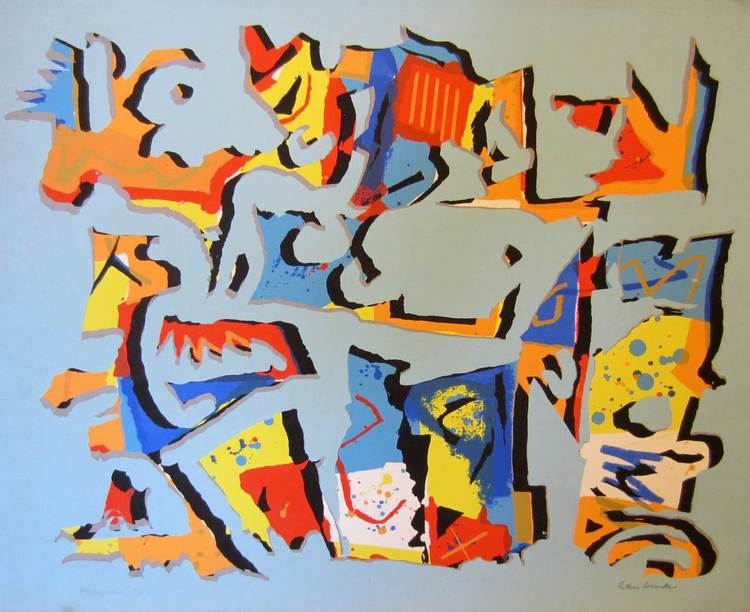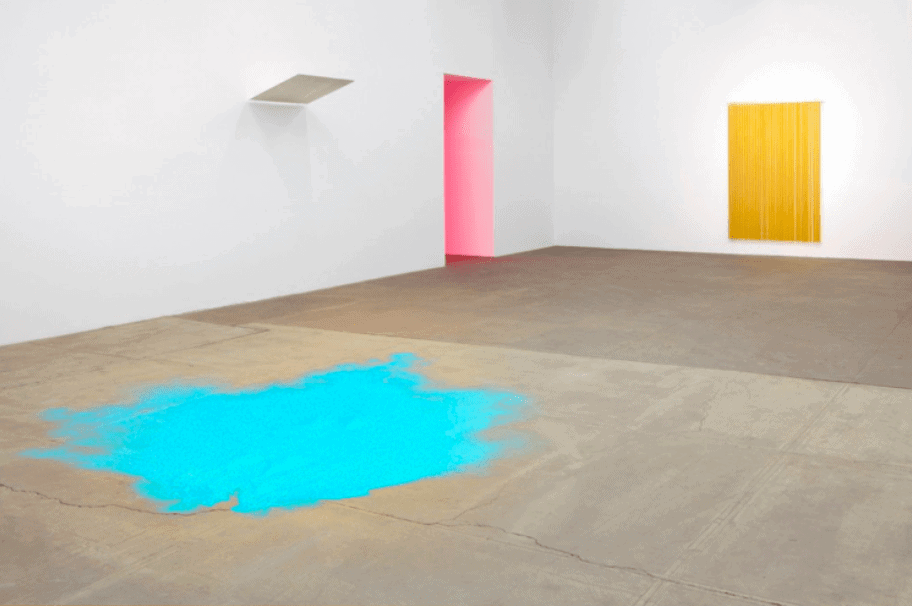
This idea was the subject of considerable debate at the planning phase. Window designs – In waiting rooms which overlook courtyards, the Latin names of trees are sandblasted on to windows. The manager of a clinical area on the ground floor spoke of how staff felt this was 'too bleak'. The success of the programmable spaces is perhaps implicitly suggested by the complaints from staff from a clinic that lacks any paintings.

Paintings – Walls in clinic areas known as 'programmable spaces' have been designated for the display of paintings, which can be supplied by organizations such as Art in Hospital, Art in Healthcare and Glasgow City arts and museums partners. Changing the orientation of the chairs means that fewer of them face the installation, and patients are not exposed to the work in the intended manner. The issue this project has faced is that the nurses who run the waiting rooms have in some instances re-arranged the chairs. The videos, different in every room, have landscape and nature themes such as the slow passing of clouds, ripples in a pool or gently waving branches of a tree. Videos – In all of the hospital's 15 waiting rooms are monitors displaying films recorded by Olwen Shone. The visual art within the building consists of videos, paintings, window designs and drawings. They chose 'A Grove of Larch in a Forest of Birch' as their artistic theme to reflect the use of natural larch finishes within the hospital and the presence of many silver birch trees in the grounds. The Working Group collaborated closely with architects and artists during the design phase of the hospital. In 2005 an Arts and Environment Working Group for the hospital was set up by Jackie Sands, Arts and Health Co-ordinator for NHS Greater Glasgow and Clyde. The new Stobhill Hospital is an Ambulatory Care and Diagnostic Centre and opened in June 2009. The idea that art may have potential positive benefits in healthcare is not new and has been recognized by artists and healthcare professionals alike. 1 There is moreover increasing evidence that the display of visual art, especially images of nature, can have positive effects on health outcomes, including shorter length of stay in hospital, increased pain tolerance and decreased anxiety. As Kirsty Schirmer, Policy Officer of the Royal Society for the Promotion of Health, argues, ‘broader determinants impact on health and … often art acknowledges these determinants where science cannot’. There has, nevertheless, always been an awareness of the ‘art of medicine’ and a realization that health is influenced by a wide range of factors, many of which fall outside the conventional boundaries of medical science. That the arts and sciences are seen as two contrasting disciplines, and indeed are defined as such, immediately presents challenges to a discussion of art in medicine, one of the foremost branches of science.

Contrary to a view which may prevail among some contemporary artists, patients who are ill or stressed about their health may not always be comforted by abstract art, preferring the positive distraction and state of calm created by the blues and greens of landscape and nature scenes instead. The fact that patients frequently express a preference for landscape and nature scenes is consistent with this observation and with evolutionary psychological theories which predict positive emotional responses to flourishing natural environments. Colours that elicit high levels of pleasure with low levels of arousal are most likely to induce a state of calm, while those causing displeasure and high levels of arousal may provoke anxiety. Effects may be mediated by psychological responses to colour hue, brightness and saturation. We conclude that art in hospitals is generally viewed positively by both patients and staff, but that the quality of the evidence is not uniformly high. In this review we examine the evidence underpinning this statement and evaluate the visual art of three of Scotland's newest hospitals: the Royal Infirmary of Edinburgh, the new Stobhill Hospital, and the new Victoria Infirmary in Glasgow. In 2006 a Department of Health Working Group on Arts and Health reported that the arts have ‘a clear contribution to make and offer major opportunities in the delivery of better health, wellbeing and improved experience for patients, service users and staff alike’.


 0 kommentar(er)
0 kommentar(er)
